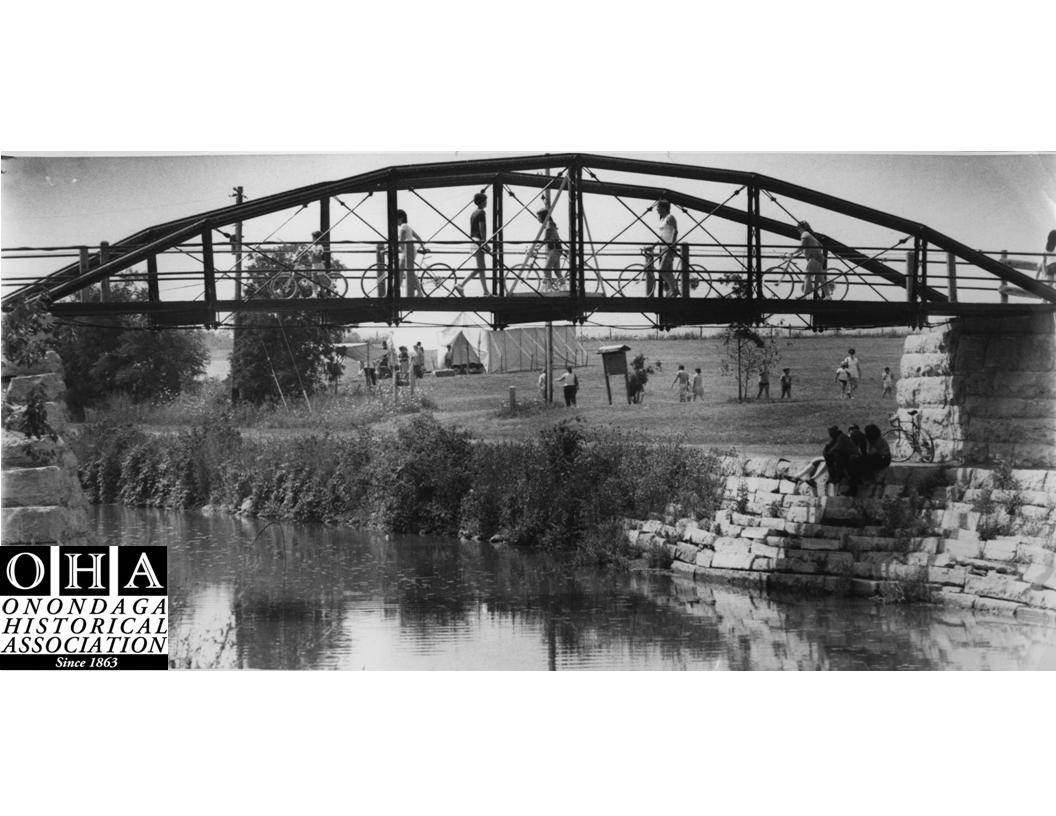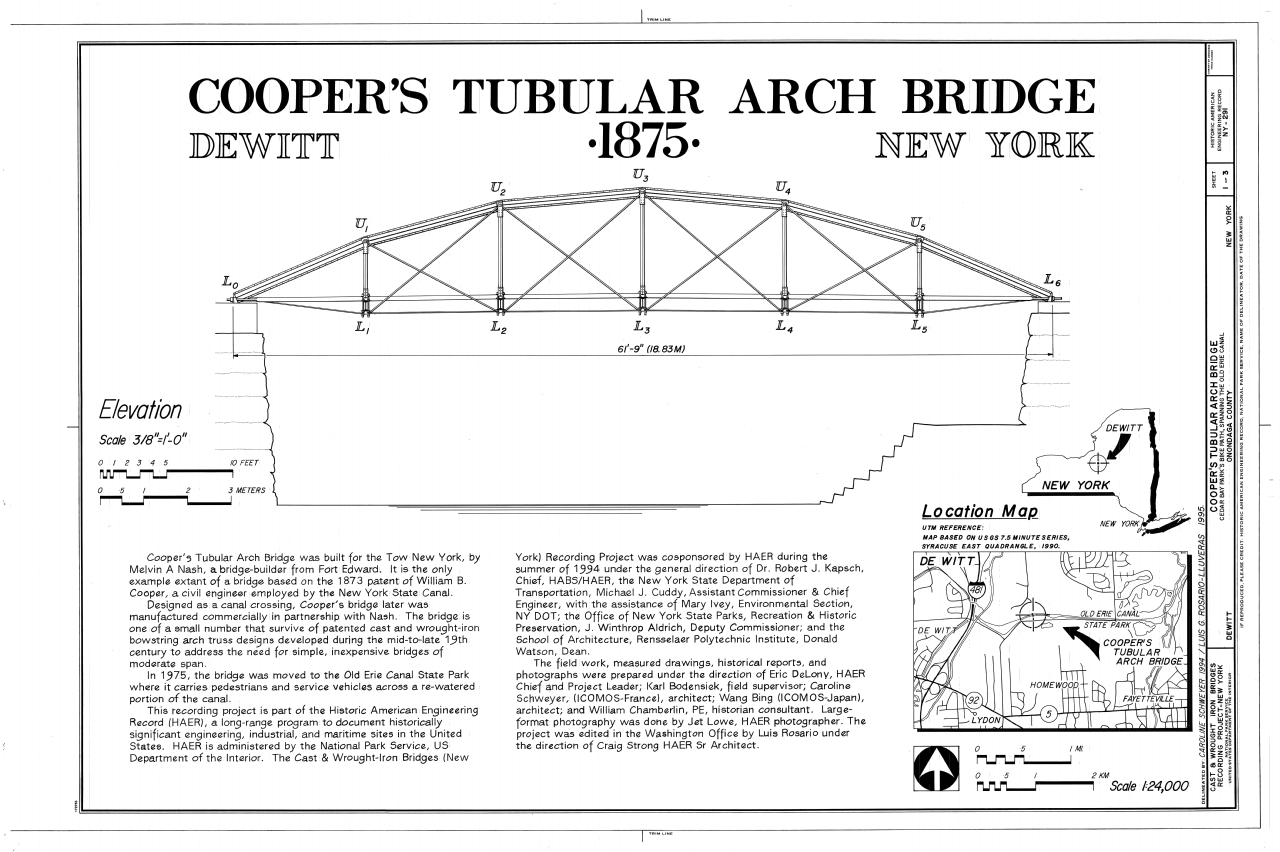
Today’s featured photograph was taken in August of 1982. Cyclists and pedestrians are crossing Cooper’s Tubular Arch Bridge (also known as the Hill Street Bridge), which spans the Old Erie Canal.
The following information is from the Library of Congress: “The bridge was built in 1886 for the Town of Canajoharie, New York by Melvin A. Nash, a Fort Edward, New York bridge builder. It is the only extant example of superstructures fabricated on the 1873 patent of civil engineer William B. Cooper, then employed on the New York State Canals.
In 1975, the bridge was acquired by the Central New York State Park and Recreation Commission and moved to the Old Erie Canal State Park in DeWitt, where it now carries pedestrians and service vehicles across a restored portion of the original canal. First built in the early 1870s by canal contractors, Cooper’s design was later manufactured commercially by himself in partnership with Nash, and then by Nash alone. His design was one of a variety of trusses of the bowstring and tied arch forms widely used for small highway and street crossings during the mid-to-late nineteenth century.
The configuration of its trusses places it in a direct line of descendants from the arched trusses of New York engineer and inventor Squire Whipple. His design was used for many years as a canal standard. The details of Cooper’s bridge and the patent upon which it is based, were a reasoned solution to problems believed to have been associated with other tubular arch bridges of the period. The bridge at DeWitt is one of a small number of patented cast and wrought-iron bridges that survive in the United States, and one of the few with a strong Erie Canal association. From its inception, the Erie Canal was a proving ground for engineering innovation, and Cooper’s design falls securely within that tradition.”


